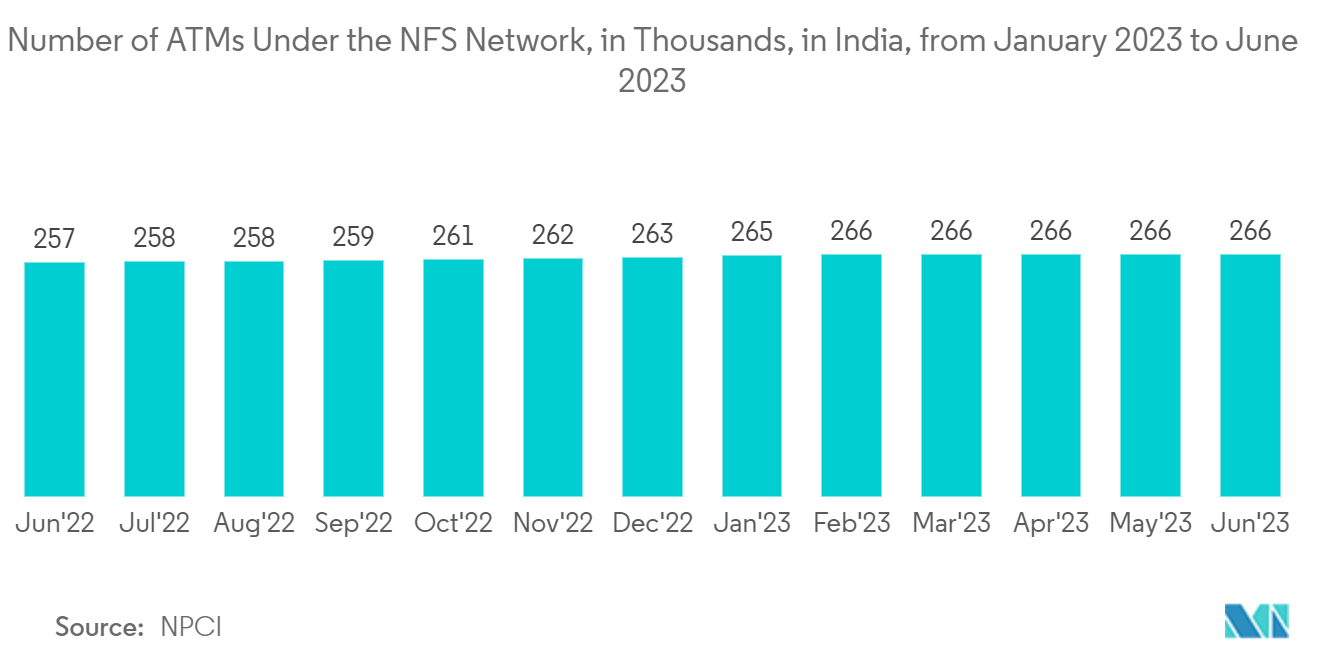Market Trends of India Surveillance Camera Industry
IP-based Camera Type is Expected to Register Significant Growth Rate
- The swift shift from analog to IP cameras has transformed the landscape of video surveillance solutions. This transition brings sharper, high-definition digital images and notable advancements in video analytics and neural networks. Unlike analog counterparts, IP cameras transmit purely digital signals, enhancing video detail. This digital clarity makes them particularly adept at facial recognition and license plate number detection tasks.
- The commercial and industrial sectors primarily steer India's demand for IP-based cameras, including retail, manufacturing, and logistics. According to the Retailers Association of India, in March 2024, the retail industry in South India led the nation with a robust sales growth of 9%, outpacing the Eastern region's 6% increase. This industry increasingly leverages advanced surveillance technologies to bolster security, streamline operations, and boost productivity. Notably, video analytics and remote monitoring appeal significantly to these sectors.
- Further, IP-based surveillance camera systems are rapidly gaining traction among government agencies and public safety organizations in India. These cutting-edge technologies find diverse applications, from traffic management to crime prevention and emergency response coordination. Their scalability and seamless integration features render them ideal for the expansive projects undertaken by the government and public safety sectors.
- In India, domestic and international manufacturers are addressing the increasing demand for IP-based surveillance cameras. They are introducing a wide range of models, each equipped with distinct features and capabilities, to meet the diverse needs of various end users. The rise in local production has enhanced affordability and improved accessibility for Indian customers.

Banking End-user Industry is Expected to Hold a Significant Market Share
- Indian banks and financial institutions face persistent risks, from security breaches to fraud. To combat these threats, they are increasingly turning to IP-based surveillance cameras. These cameras boast advanced features like high-resolution imaging, facial recognition, and video analytics. Their prowess in identifying and tracking individuals and the ability to monitor suspicious activities positions them as indispensable assets in the banking sector's security arsenal.
- India's banking sector operates under strict regulatory mandates, particularly from entities like the Reserve Bank of India (RBI). The RBI underscores the necessity of video surveillance in banking to uphold transparency, accountability, and industry standards. In this context, IP-based camera systems, known for their robust storage and data management, emerge as the ideal solution to fulfill the sector's stringent auditing and regulatory needs.
- Indian banks are aggressively expanding their branch networks and rolling out numerous ATMs nationwide. According to NPCI, as of June 2023, the National Financial Switch (NFS) network boasted over 266,000 ATMs. This network, comprising nearly 1,200 affiliates, facilitates over 300 million transactions, solidifying its position as India's largest ATM network. Safeguarding these physical assets, from branches to ATMs, has become a top priority. Here, surveillance cameras take center stage, bolstering security and dissuading criminal activities. These cameras empower banks to swiftly and efficiently address incidents equipped with remote monitoring, motion detection, etc.
- Further, banks are prioritizing customer safety and deploying advanced surveillance cameras. These cameras, equipped with features such as people counting and customer behavior analysis enhance security and aid in optimizing branch layouts and operations, ultimately elevating the customer experience.


